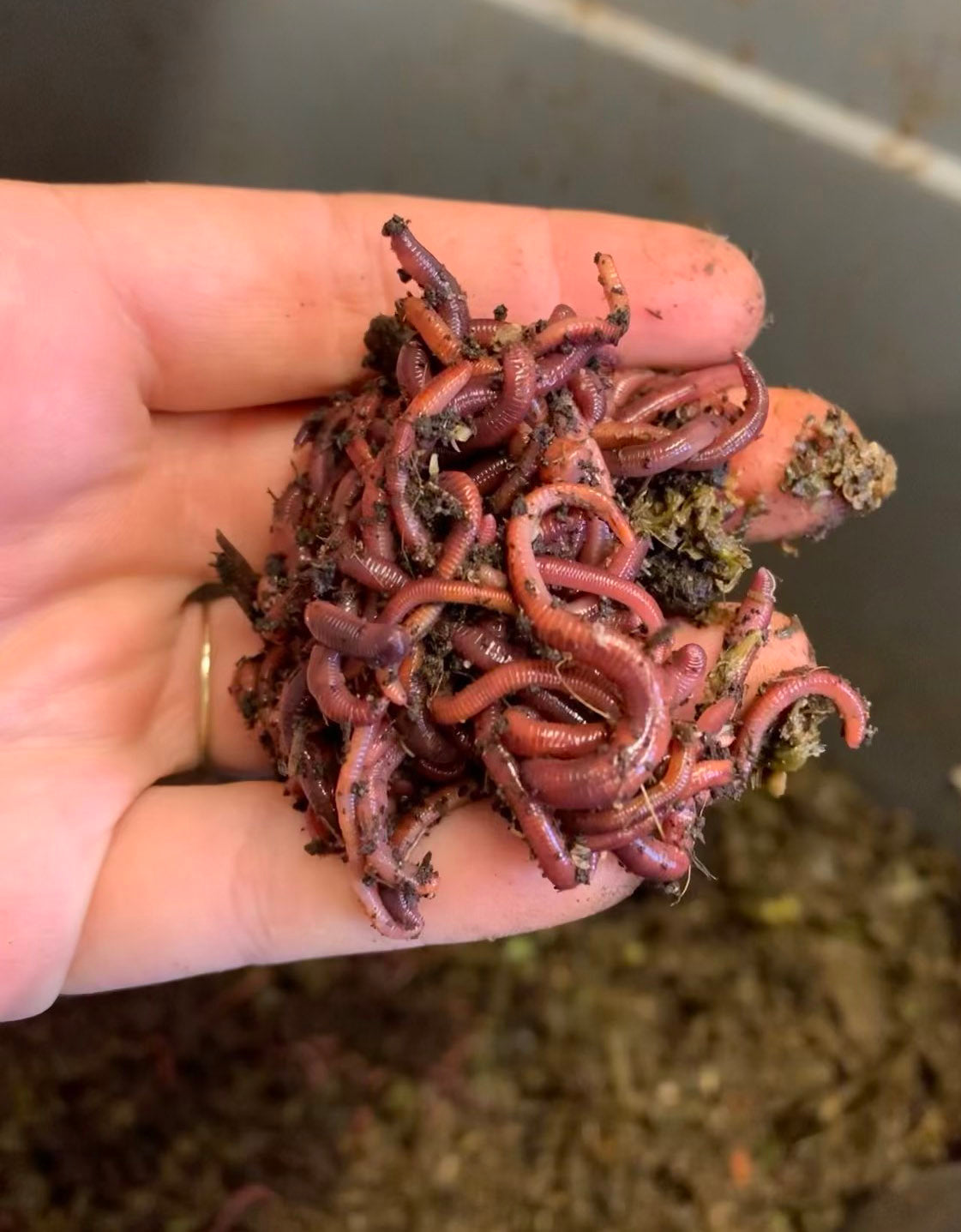Red Wigglers 101: Every Little Thing You Need to Know for Thriving Gardens
Red wigglers, or Eisenia fetida, play a vital role in sustainable gardening techniques, offering as efficient decomposers that convert natural waste into important vermicompost. Recognizing their environment, dietary choices, and the myriad benefits they provide can change your gardening strategy.
Understanding Red Wigglers

Red wigglers thrive in environments rich in natural product and wetness. Red Wiggler Express. They have an one-of-a-kind gastrointestinal system that enables them to process food scraps quickly, excreting spreadings that are loaded with vital nutrients such as nitrogen, phosphorus, and potassium. These castings enhance dirt structure, boost water retention, and foster advantageous microbial task, every one of which contribute to durable plant wellness
In addition, red wigglers can make it through in diverse conditions, making them versatile to numerous horticulture practices, consisting of indoor and outdoor composting systems. Their capability to eat big amounts of organic waste daily settings them as important allies for both home gardeners and industrial farmers. By integrating red wigglers right into gardening efforts, one can significantly boost soil fertility and assistance lasting gardening methods.
Ideal Environment for Red Wigglers
Developing an ideal setting for red wigglers is important for maximizing their composting abilities and total wellness. Red wigglers prosper in damp, dark, and well-aerated environments, which carefully resemble their native environments in ground cover and rotting raw material. An appropriate habitat ought to supply a temperature range in between 55 ° F and 77 ° F(13 ° C to 25 ° C), as extreme temperatures can emphasize or hurt the worms.
The bed linens product, such as shredded paper, cardboard, or coconut coir, must be maintained wet but not excessively wet, as too much moisture can lead to anaerobic conditions damaging to worm wellness. Furthermore, a pH degree in between 6.0 and 7.5 is perfect, guaranteeing a well balanced atmosphere.
Appropriate oygenation is similarly vital; it permits oxygen flow and protects against the build-up of dangerous gases. A container or bin created for vermicomposting should have water drainage holes to get rid of excess dampness and promote airflow. Routine tracking of these problems is crucial for preserving a flourishing red wiggler populace, ultimately enhancing their efficiency in damaging down organic waste and improving garden dirt.
Dietary Needs and Preferences

Red wigglers show my blog specific choices; they are especially fond of softer, disintegrating materials over more difficult or more coarse compounds. It is vital to stay clear of feeding them citrus peels, onion, and garlic in big amounts, as these can be harmful. In addition, meat, dairy products, and oily foods should be left out, as they can bring in parasites and create unpleasant odors.
Benefits of Utilizing Red Wigglers
The amazing benefits of using red wigglers in gardening expand far beyond their duty in composting. These functional microorganisms add substantially to soil health and wellness, boosting vitamins and mineral accessibility and advertising microbial activity. By freshening the soil as they burrow, red wigglers improve water drainage and root infiltration, creating an optimum atmosphere for plant development.
Furthermore, red wigglers are effective recyclers of organic waste, converting it right into nutrient-rich castings that work as an exceptional natural plant food. These castings include beneficial bacteria and essential nutrients, such as nitrogen, phosphorus, and potassium, which are vital for plant advancement. The slow release of nutrients from worm spreadings makes certain a consistent supply, decreasing the threat of nutrient leaching and advertising lasting gardening techniques.
Utilizing red wigglers cultivates a much more lasting horticulture strategy by minimizing reliance on chemical fertilizers and promoting a closed-loop system, where waste is transformed into important sources. On the whole, including red wigglers right into gardening methods uses a wide variety of ecological and farming advantages.
Composting With Red Wigglers

To initiate a successful vermicomposting system, pick an appropriate container with proper ventilation and drain. The suitable setting for red wigglers includes a damp, dark setting with temperature levels in between 55 ° F and 77 ° F. Begin by layering shredded paper, cardboard, and food scraps, guaranteeing a well balanced mix of carbon and nitrogen-rich materials.
Red wigglers flourish on veggie peels, fruit scraps, coffee premises, and eggshells, while avoiding meat, dairy, and oily foods that can draw in insects. Consistently keep an eye on moisture degrees; the bedding needs to be damp but not soaked. Harvest worm castings every couple of months by separating the worms from the garden compost, which can then be utilized directly in yards or saved for later usage.
Executing vermicomposting not just minimizes garbage dump waste yet additionally enhances garden dirt, promoting healthy plant growth and lasting horticulture practices. Accept this environment-friendly method to boost your gardening endeavors.
Verdict
In recap, red wigglers are important microorganisms for boosting yard productivity with reliable composting. By making use of red wigglers, gardeners can significantly boost soil high quality and nutrient availability, fostering healthier plant development.
Comments on “Enhance Your Lawn’s Health and Beauty with Red Wiggler Express Lawn Care Services”